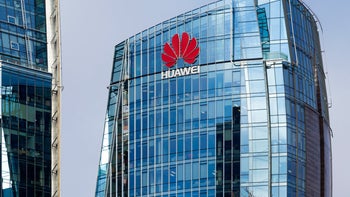5nm Kirin 1020 SoC tipped for next year's Huawei Mate 40 line

Huawei's current flagship AP, the Kirin 990, is the chipset that powers the company's Mate 30 line. Manufactured by TSMC using its 7nm process, the version of this SoC with an integrated 5G modem stuffs 10.3 billion transistors inside. Introduced at the IFA show in Berlin back in September, the Kirin 990 will be powering the Huawei P40 series that could be launched as soon as Q1 of 2020.
When the time comes next fall for Huawei to release its most technologically advanced phones of 2020, the Mate 40 line, a new chipset should be under the hood. According to a post made on China's Weibo microblogging site (via GizChina), that would be the Kirin 1020. The tip noted that the component will be manufactured using the 5nm process, and since Huawei is one of TSMC's top customers, we have no doubt that the Kirin 1020 will be produced by the world's largest independent foundry. TSMC will start delivering 5nm chips to customers during the second quarter of next year. At 5nm, the Kirin 1020 could contain as much as 171.3 million transistors per square millimeter.
Kirin 1020 is expected to have a 50% performance boost over the Kirin 990
Apple will probably release the first smartphone to be powered by a 5nm chip when the 2020 iPhones are launched, presumably next September. These handsets will be equipped with the Apple-designed and TSMC built A14 Bionic. That will be followed by the Kirin 1020 powered Mate 40. The upcoming flagship Snapdragon chip, the 865 Mobile Platform, will be manufactured by Samsung using its 7nm EUV process. The first 5nm Snapdragon AP, the Snapdragon 875, won't roll off of TSMC's assembly line until 2021. The lower the process number, the more transistors fit inside a chip bringing improved performance and more energy efficiency. Both Samsung and TSMC could be manufacturing 3nm chips as soon as 2022.
A couple of days after the Kirin 990 was introduced, the CEO of Huawei's consumer group, Richard Yu, admitted that the chip did not include ARM Holdings' most powerful CPU core at the moment. Instead of including the Cortex-A77, the Kirin 990 sports the Cortex-A76 performance core. Yu said that the chip offered more power than a consumer needs and as a result, he said that trading extra power for a shorter battery life wasn't worth using the Cortex-A77 in the Kirin 990. The only problem with that analysis is that according to ARM, the Cortex-A77 provides a 20% performance boost with no additional draw on the battery. When pressed on this matter, the Huawei executive said that the company's internal testing contradicted ARM's claims. The Kirin 1020 will skip the Cortex-A77 CPU core and will use the Cortex-A78.
[img center [[354324]]:"The Kirin 990 SoC will power the Huawei P40 line next year"]
The Kirin 1020, said to carry the code name of Baltimore, will reportedly offer a 50% performance boost over the Kirin 990. That is twice the 25% improvement that the Snapdragon 865 is expected to provide over the Snapdragon 855.
Thanks to some luck and prescient action on the part of Huawei, the company can design upgraded chips even though it is banned from accessing its U.S. supply chain. When the manufacturer was first placed on the U.S. Commerce Department's entity list in the middle of May, U.K. chip designer ARM Holdings said that it would cut ties with Huawei. The firm said that this was because it uses American original technology. Luckily, Huawei anticipated a ban and had stockpiled some components. And then in October, ARM reversed its position and said that because "ARM’s v8 and v9 are UK-origin technologies," it could do business with Huawei after all.
And now it appears that Huawei will be able to keep upgrading its chipsets even without its U.S. supply chain. That will help the company next year as it attempts to surpass Samsung to become the top smartphone manufacturer in the world.













Things that are NOT allowed: